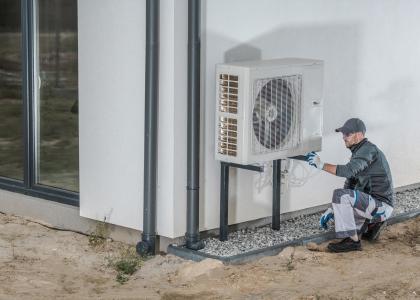Energy Efficiency Resource Standard: In Practice
What savings are required?
An EERS specifies how much energy utilities need to save, either on an annual basis, on a cumulative basis, or both. The Markey and Schumer bills provide cumulative targets. (See, for example, H.R. 889 Sec. 610(d)(2).) Savings targets are usually expressed as a percent of energy sales (the baseline) and slowly increase over time. Under the federal bills, the baseline is rolling as it is an average of the preceding two years energy sales. In 2011, for example, a utility will know its electricity sales for 2009 and 2010. The utility will average those sales, and multiply the average by the 2011 savings target to determine how much energy it must save in 2011.
How are savings achieved?
Utilities implement and administer energy efficiency programs which help consumers reduce energy use. Programs often provide technical resources and assistance to help customers identify which energy efficiency measures will have the biggest impact, and then provide rebates or incentives to pay a portion of the cost of energy efficiency measures. Commonly, a utility will contract with private companies to provide energy services, such as auditing and installation of energy efficiency equipment and appliances.
Rebates are usually offered for highly energy-efficient equipment such as air conditioners, water heaters, furnaces, and lighting and for home and commercial building retrofits, such as improving insulation to increase energy savings. For example, Pacific Gas and Electric (PG&E) offers a variety of rebate programs. Testing and sealing heating and air conditioning (HVAC) ducts may qualify for a rebate of up to $400. Many high-efficiency appliances are also eligible for rebates, including furnaces ($300 rebate) and dishwashers ($50).
Low-interest loans may also be incorporated to help end-users afford high-efficiency equipment and retrofits. Some utilities also provide incentives to distributors and suppliers for stocking high-efficiency products, and negotiate purchase price buy-downs for efficient equipment, such as CFL bulbs, with suppliers and retailers. Other programs promote efficient new buildings (encouraging energy improvements that exceed building code requirements) and industrial process improvements.
Sometimes, combined heat and power (CHP) systems and other high-efficiency distributed generation systems savings may be used to meet the savings targets. Savings from CHP systems are credited to the extent energy is saved relative to conventional power generation of power and steam. Distribution system efficiency improvements can also count toward the savings target goal. Possible improvements include improved transformers and voltage controls or new conductors and wires that lower energy losses. Savings from adoption of improved building codes and appliance standards may also be counted toward the targets if the utility played a significant role in achieving the savings.
Evaluation, Measurement, and Verification of Savings
Evaluation, measurement and verification procedures are to be determined by the Secretary of the DOE. The federal bills list various criteria that must be included in the procedures. (See H.R. 889, Sec. 610(f).) Estimated savings should be adjusted for changes in weather, production levels and changes in building floor area to ensure that savings are attributable to energy efficiency measures. For CHP savings, for example, the energy usage can be read from a meter on the system. Based on data from the power pool a formula can be used to determine the annual energy savings relative to buying power from the local utility. For programs aimed at commercial and residential customers, savings can be estimated by taking a sampling of participants, determining the energy savings that are attributed to a certain program through billing analysis, extrapolating those estimated savings to all participants and then comparing the energy use of participants versus non-participants (which provide the business-as-usual baseline). Savings should be documented on a program-by-program basis. Energy savings are reported to the state Public Utilities Commission, which reviews the reported savings and makes revisions if deemed necessary. The federal proposals also call for independent, third-party verification of the savings (which would be similar to an auditor reviewing the utility for tax purposes, only this would be reviewing to ensure accurate energy savings).


